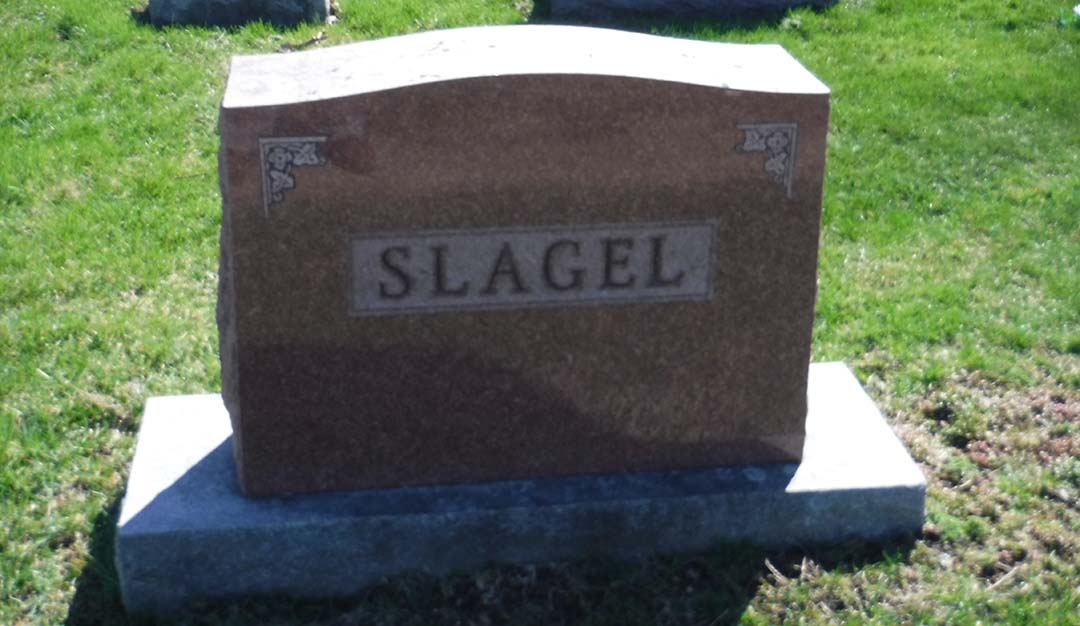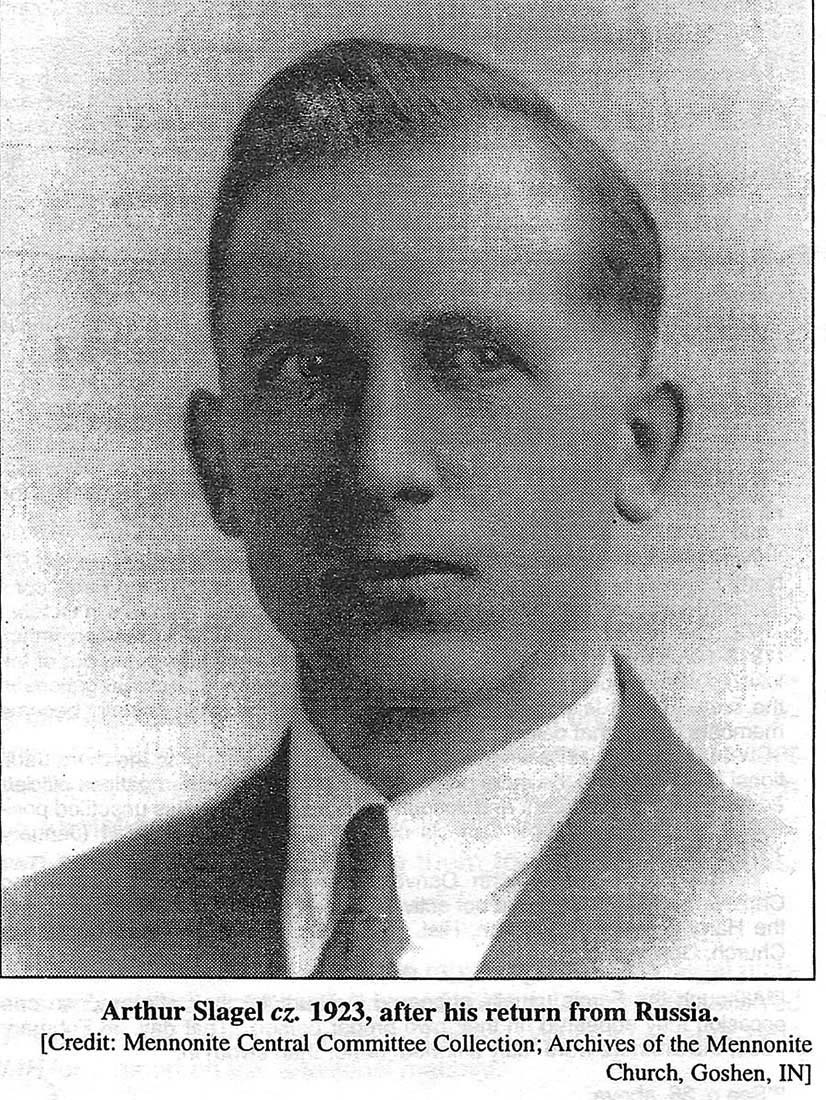The Unique and Productive Life of Arthur Slagel (1891-1943)
by Donna Schrock BirkeyA recent online presentation by Illinois Mennonite Historical and Genealogical Society about the early life work of Arthur Slagel prodded me to re-read the three-part story by Myrna Slagell Park of his life published in 1995 in three issues of Illinois Mennonite Heritage (IMH). Any connection to Arthur was lost on me at the time, but I have since then found that he and I are 1st cousins 2 times removed: connected in three Illinois families: Yordy, Roeschley, and Sommer. (As an aside, I never had the opportunity to meet Myrna, but I could have told her that her husband, Homer William Park, and I were 3rd cousins, 2 times removed.) I will lean heavily on her information to sketch out a look at Arthur’s life—one that harks forward to the present. – Donna Schrock Birkey
“September 1, 1920—We are finally off for Constantinople, Miller, Kratz, and I. Saw the New York skyline fade away in the distance this afternoon as our ship struck out across the Atlantic. It gives one a strange feeling. What will our experiences be? (March 1995 IMH)
Arthur William Slagel, born January 13, 1891, near Flanagan, Illinois, was the child of Daniel Webster Slagel and Mary Catharine Roeschley, a not-too-distant relative of mine and one of many names on this website. His wife, Mary Catharine, was the daughter of my great-great grandparents, Johannes Roeschley and Elisabeth Saltzman, both born in France.
Growing up in a minister’s home, Arthur, quiet, studious, and musical, came into contact with missionaries, and worked toward that same kind of life. He was smart in his youth, developed an apiary of bees on his father’s farm, and loved to sing with his family as they worked and at church (he had perfect pitch). The Slagel siblings often sang with their Roeschley cousins for an evening.
Arthur learned to speak in six languages: German, French, Hebrew, Greek, Bohemian, and Russian. He learned good farming practices on the family farm—practices handed down for generations. He could fix anything, and make anything from materials at hand. He made a hobby of photography.
He attended college, took some graduate classes at the University of Chicago, and kept his interest in music, agriculture, classical art and architecture, while pursuing his desire to do some kind of mission work.
His church affiliation was Mennonite. That group had formed Mennonite Central Committee (MCC) in 1919-20 to provide relief to Mennonites in Russia and Ukraine at the time of WWI. It was in February 1920 that Arthur wrote in his diary: I have decided to go into relief work—if there is an opportunity.
He embarked on 1 Sep 1920, with two other workers and a Ford truck “Old Trusty”, on the ship Providence. After stops in Gibraltar, Sicily (Pompeii), Rome (had an audience with Pope Benedictus IV); Athens, then on the Aegean Sea to Constantinople—their first destination. From there they eventually managed relief work in both Russia and Ukraine. “ ‘Old Trusty’ was usually the most dependable means of transportation as the team traveled around from place to place. Breakdowns were frequent, but Arthur’s ability to improvise repairs often saved the day.”
Their dedicated work was effective. After the crisis, “Soviet officials evaluated the operations of the various relief organizations, they rated the massive French Red Cross high-test and ranked the American Mennonite Relief, with only a few workers, second.” His [Arthur’s] sense of commitment to service exemplified the statement made by his college classmates in 1919 when they described him as: A man of few words, studious, systematic, resourceful and energetic. Give him a job and watch him go through with it.”
On July 23, 1923, he was on his way home. “He had stayed at his post as director of the MCC’s food distribution program for the entire Ukraine until the last kitchen closed. By then the crisis of the famine was over, and he could leave with a clear conscience.” He had signed up for only one year. He felt that those who did not believe in participation in war should be willing to go and help those who suffered as a result of war.
Back in America, Arthur pursued several relationships with possible wives, but in the end, he married his college mate and then co-worker in Europe, Vesta Zook. They were married in LaGrange County, Indiana on May 22, 1925. They had one son, Donald Arthur, born 13 Jan 1928, on his father’s 37th birthday. They lived in Chicago for a time, then moved to Vesta’s family farm in Indiana, to be near her mother after her father died.
While living in Chicago, Arthur had mentioned in one of his missives to a friend, “I think I have found a work that I can enjoy and to which my handicap does not interfere….” The handicap turned out to be hearing loss. That loss, along with his scientific animal husbandry pursuits ultimately led to his death. On April 22, 1943, at the age of 51, Arthur was without his hearing aid while working, when a prized bull escaped from its enclosure and killed Arthur instantly.
Arthur was never really recognized for his relief work (he supervised the feeding of 75,000), perhaps it was that he didn’t want to “blow his own horn.” He wrote before returning home: “This has been a wonderful experience in spite of the problems and difficulties but one won’t know until later what it all meant.”


